16 foods you're probably slicing, peeling, and cutting all wrong
Cheyenne Lentz

- Chefs explained the proper way to cut, peel, and slice fruits, vegetables, meats, and cheeses.
- They advised avoiding dull knives, especially when slicing eggplant and bread.
Business Insider asked several chefs, cheesemongers, and other food experts for their advice on how to properly prepare vegetables, fruits, cheeses, meats, and breads.
Here are some of the foods you might be slicing, peeling, or cutting wrong — and tips to help you do it right.
Using a peeler on ripe kiwis can crush them — use a spoon instead.
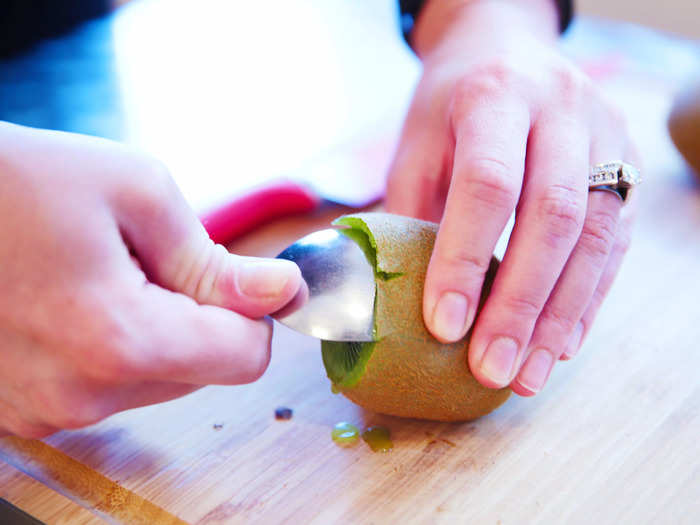
Chef Scott Swartz, an associate professor at The Culinary Institute of America, said using a peeler on a really ripe kiwi will most likely crush it.
"A great trick is to cut off the top and bottom, then insert a spoon close to the skin and run it around the inside to release the whole center," he told BI.
When dealing with mangoes, cut off the edges to create a flat surface first.
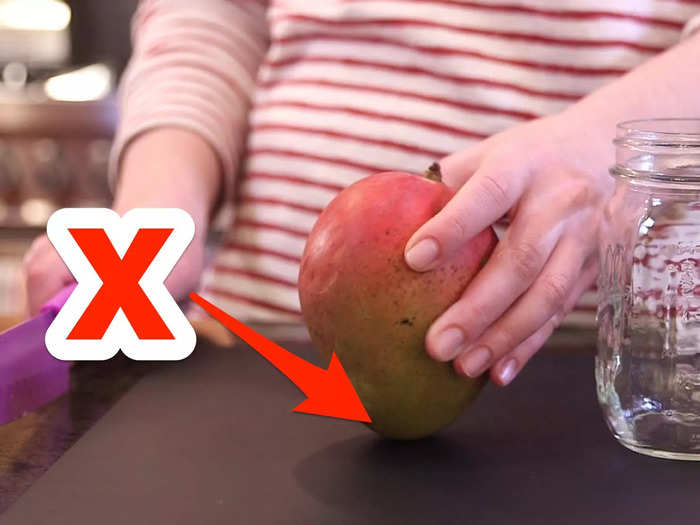
Not cutting the edges off a mango prior to slicing can be dangerous, Swartz told BI. For safety, you'll want to cut the top and bottom off first.
Next, the chef said to cut down toward the pit with the mango standing up, as the shape of the pit is flat and oval. Like with kiwis, avoid using a peeler if the mango is very ripe.
It's essential to cut the "eyes" off of pineapples because they're tough to chew.
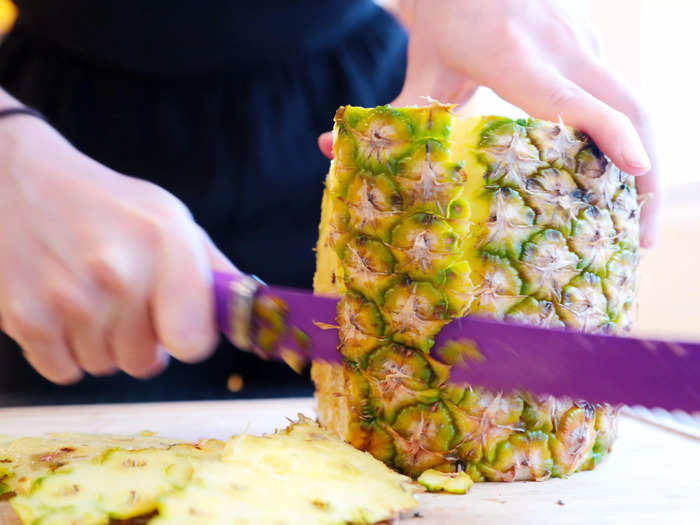
Swartz told BI that the biggest mistake most people make with pineapple is not cutting off the "eyes" — the brownish spots that remain after you remove the fruit's skin.
Instead, he said to start by cutting off its top and bottom. Next, use a knife to peel around the outside, making sure to cut off the eyes to avoid an "unpleasant chewing experience."
Retrieve pomegranate seeds with less mess by slicing the fruit in half first.
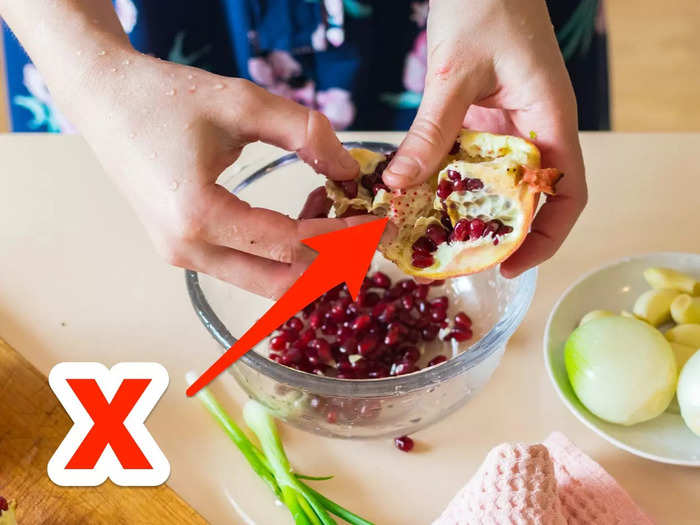
To avoid too much of a mess, Swartz said to cut pomegranates in half first. Then, over a bowl, hold the cut side down and tap the skin side hard with a spoon. The seeds will be released into the bowl.
"If you then put the seeds in water, you can remove the pit from the seeds more easily," Swartz told BI.
Using a dull knife to cut eggplant can cause oxidation, turning the slices brown.
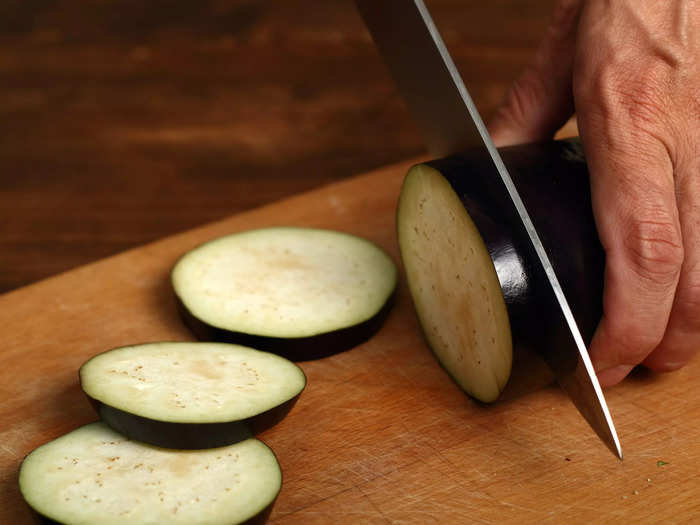
Eggplant can oxidize quickly when exposed to air, resulting in brown discoloration. To reduce this oxidation, speed up the slicing process by using a sharp knife.
When it comes to slicing eggplant, chef Alexander Plotkin, the chief culinary officer at Tovala, recommended cutting the vegetable width-wise into slices twice the size of your desired final product.
"Eggplant shrinks while cooking because the moisture of it is held, so it's better to cut larger than you think," he told BI.
Stop peeling carrots, as most of the nutrients are found in the peel.
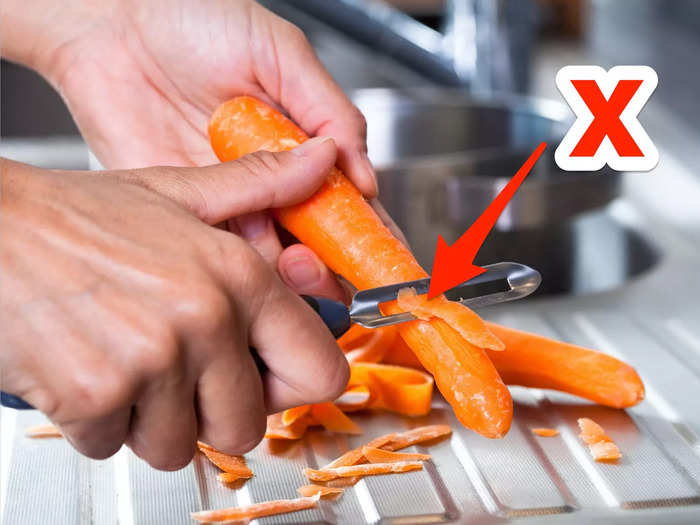
"If you wash your carrots well enough, you do not need to peel them," Plotkin told BI.
It saves you prep time, and there are a lot of nutrients in the skin of carrots.
It's easier to snap asparagus by hand instead of cutting it with a knife.
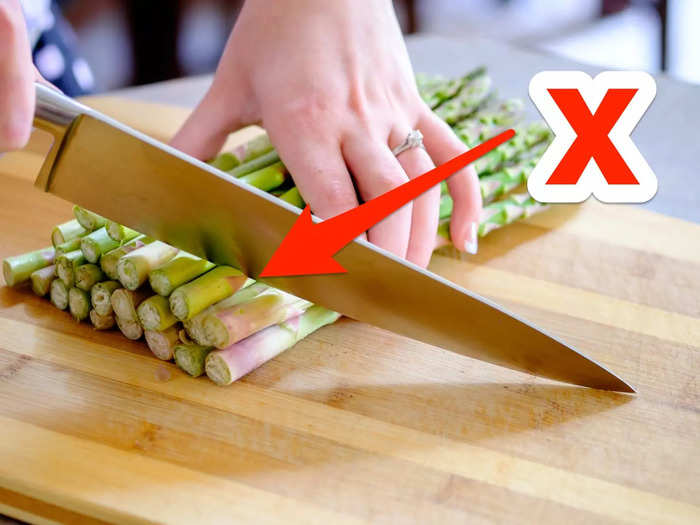
Plotkin said he best way to "cut" asparagus is actually with your bare hands.
To remove the tough, woody end of the spears, take one end in each hand and slowly bend the asparagus inward until it snaps naturally.
"If done correctly, the point at which it snaps is where the tough end and tender part of the spear divide," the chef said.
To prevent injury and minimize sliding, place a towel under winter squash before cutting it.
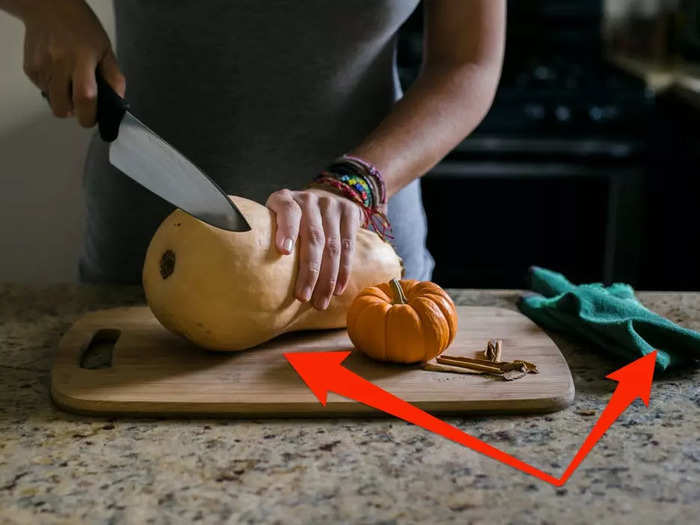
"Be very careful when cutting squash. Its uneven surface makes cutting difficult and can lead to injury," Plotkin told BI.
The best technique is to place a towel underneath the squash to minimize sliding.
If dicing, remove the top and bottom ends and proceed to peel slowly and carefully with a veggie peeler. Once peeled, cut the squash in half from top to bottom. This will increase the squash's stability, making the next cuts easier and safer.
Cutting off the top of an onion can make it harder to chop.
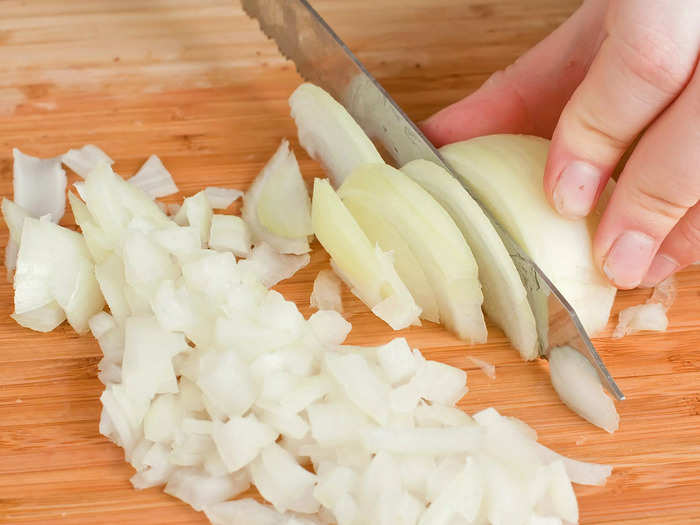
When it comes to onions, cut only a small section off of the root end (opposite the side with fibers).
Leaving the root end intact will allow for better control and better results, Masaharu Morimoto, the owner and chef of Morimoto Management/Morimoto Las Vegas at MGM Grand, told BI.
Then, cut the onion in half from top to bottom and peel the first layer off of both halves before laying them flat to slice.
Bell peppers should be seeded prior to slicing.
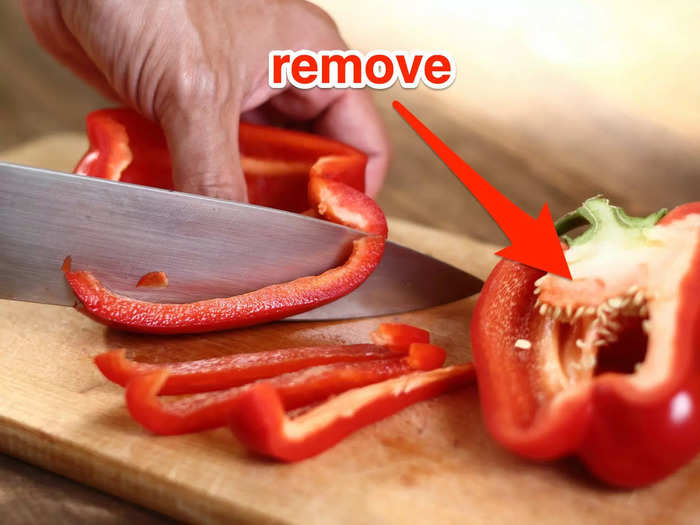
For the best results, cut bell peppers directly in half and remove both the core and stem.
Morimoto also told BI to make sure to carefully remove all seeds before slicing.
Chunk hard cheeses into shards, not cubes.
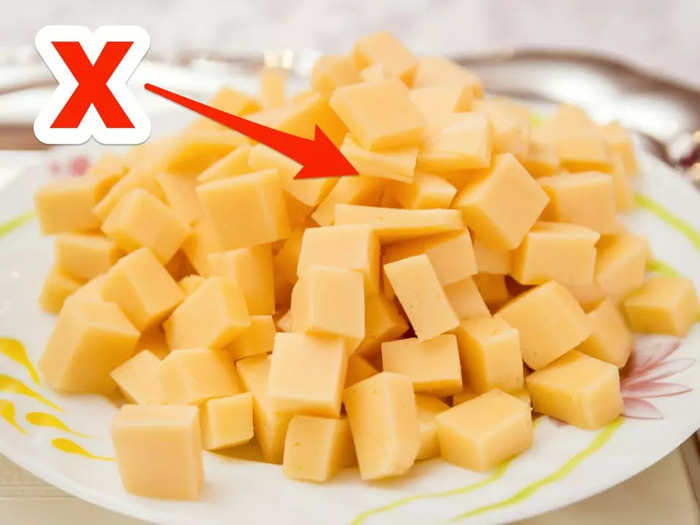
Hard cheeses, like aged cheddar, that have a crystalline texture are best handled by being chunked into shards with a small cheese knife.
Liz Nerud, a certified cheese professional with the American Cheese Society and cheesemonger at Kowalski's Market, told BI, "With a little handiwork and the right cutting pattern, these chunks of cheese can be transformed into something far more textural than a pile of cubes."
For the best flavor possible, never remove the "nose" from a wedge of soft cheese.
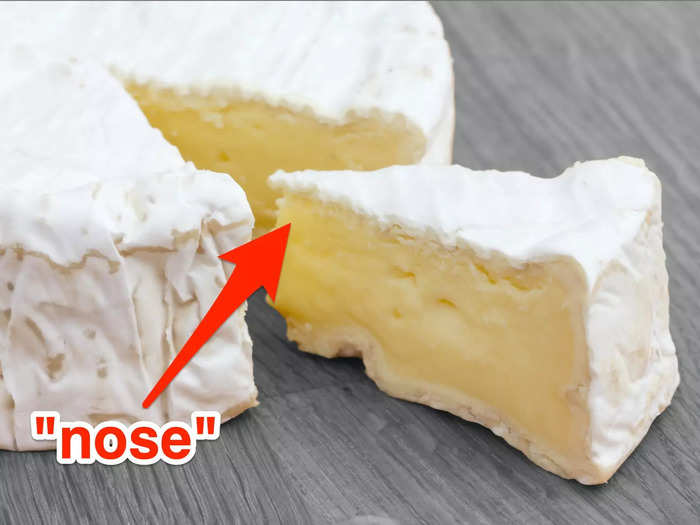
For soft cheeses, like Brie and Camembert, Nerud said the rind is a crucial part of the cheese's structure. This type of cheese should be served as a whole piece on the board or platter, and the "nose" should not be removed.
Proper French cheese etiquette dictates that the "nose," or the point of the wedge that has been cut from the wheel, is never to be cut off, and the cheese should never be scooped out from the rind.
In order to ensure every slice has the fullest flavor, soft cheese should be cut along the wedge.
Sandwiches and bread loaves will get crushed under a dull knife.
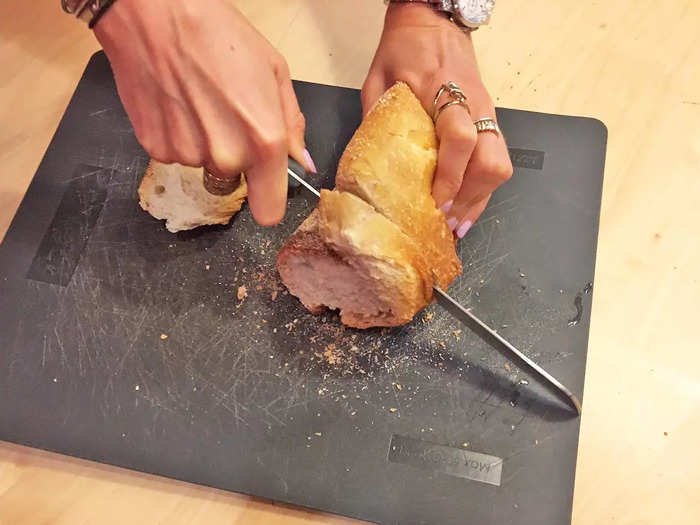
John Doherty, the chef and owner of BLACKBARN Restaurant and founder of the Heavenly HARVST Foundation, said applying too much pressure with a dull knife will crush a loaf of bread.
In fact, the chef recommends using a serrated bread knife because even a sharp blade can crush the crust.
Additionally, the best method for cutting bread loaves is actually by placing them on their sides — not flat on the cutting board
Using a knife to cut pizza can cause a big mess.
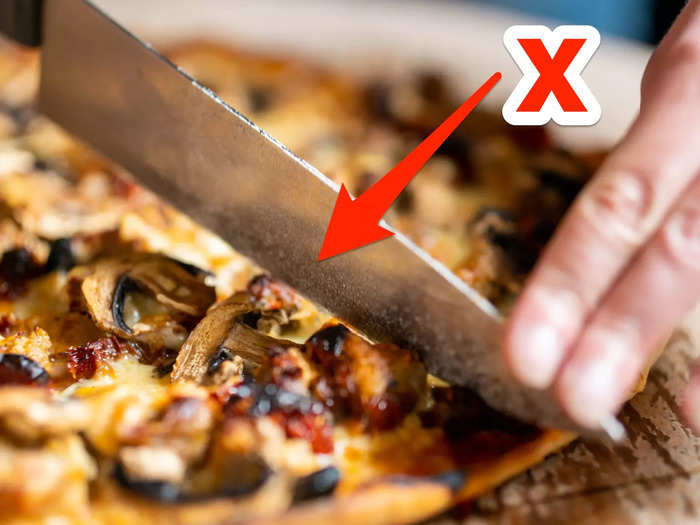
Doherty said slicing a pie with a knife is a bad idea — you should use a pizza wheel instead.
"A knife tends to pull cheese and toppings off and makes it messy, also impacting the appearance of the dish," he told BI.
Always slice against the grain of raw meat.
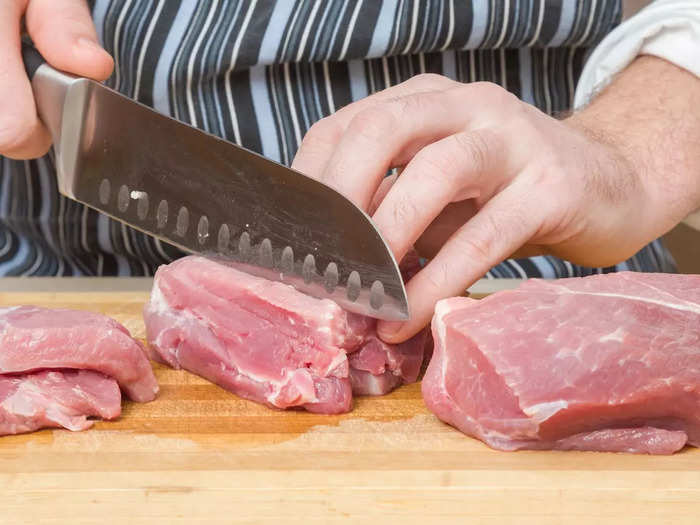
In general, always slice against the grain when it comes to cutting raw meat.
James Peisker, cofounder of high-end butcher shop Porter Road, said to look for the threadlike muscle fibers running through the meat.
"When slicing, the goal is always to shorten the muscle fibers, making the meat easier to chew," he told BI.
Let cooked meat rest before you slice it.

Peisker told BI that cooked meat should always rest for about five to 10 minutes before being sliced.
Meat can lose moisture if you don't let it rest before you cut into it, so it's especially important to follow this advice for chicken, which doesn't have a ton of moisture to spare.
This story was originally published in March 2020 and most recently updated on September 12, 2024.
- 15 things you're probably cleaning incorrectly
- 10 stovetop mistakes that are ruining your food
- The biggest things Americans get wrong about Italian food, according to a chef
- Experts reveal 7 things you should never serve at a wedding
- Chefs reveal the best and worst things to order at a Mexican restaurant
Popular Right Now
Popular Keywords
Advertisement